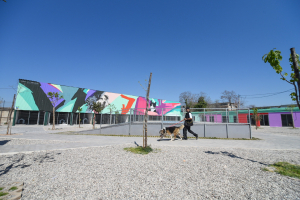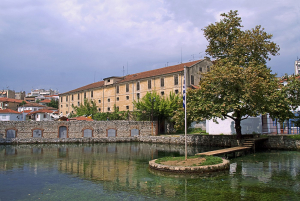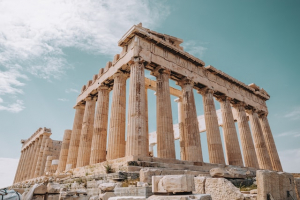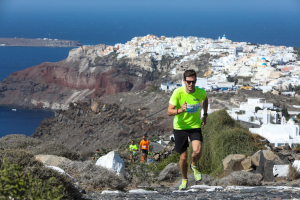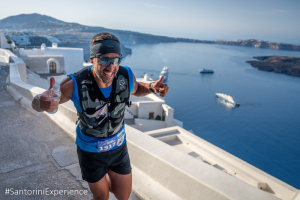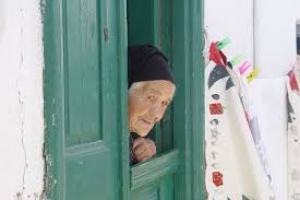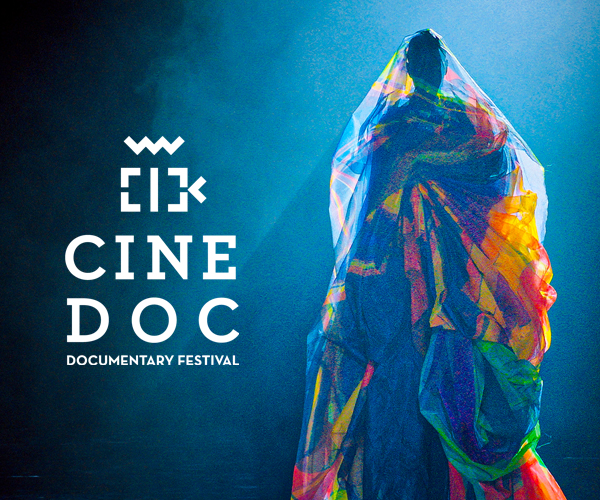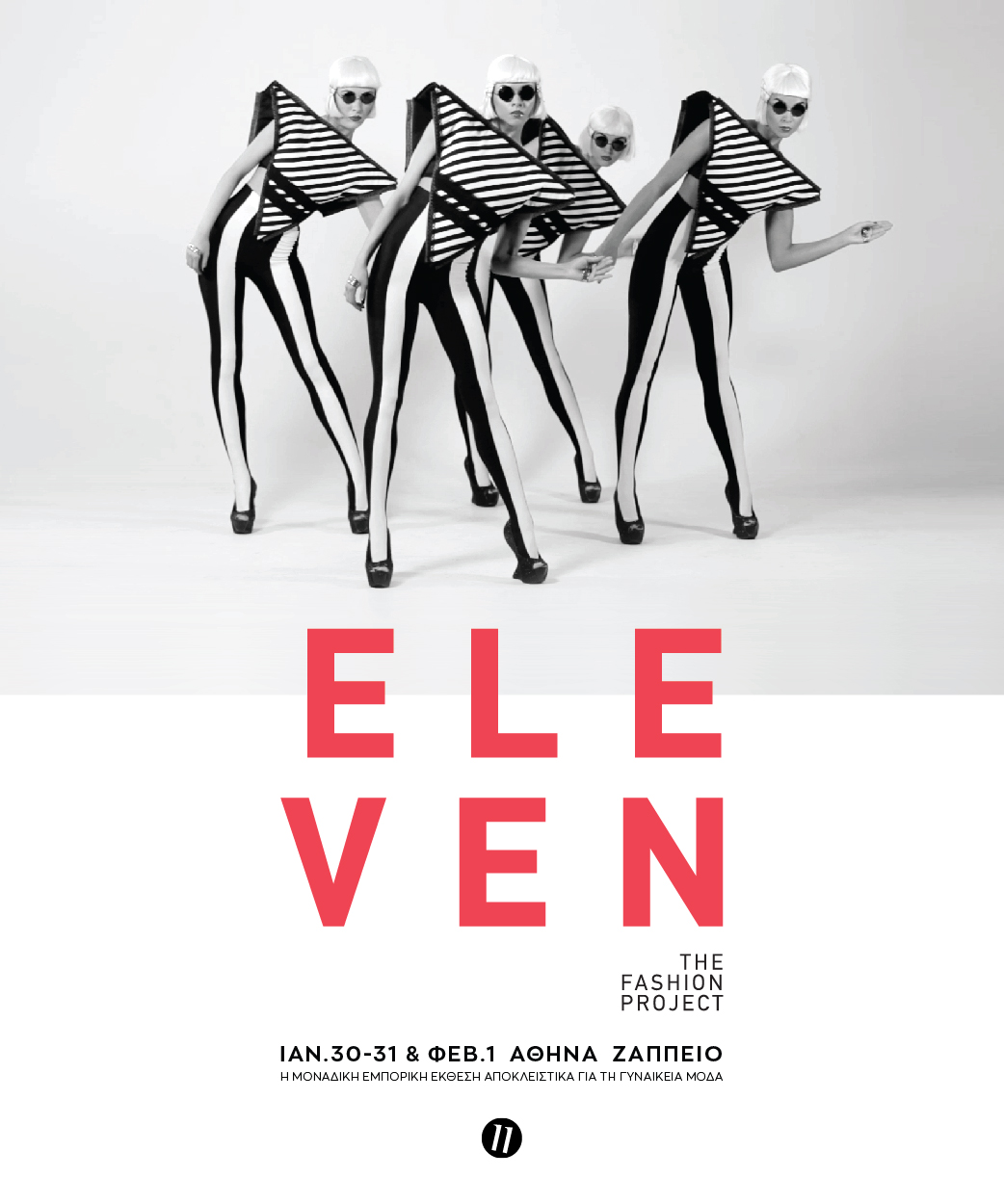XpatAthens
Important Coronavirus Update – Food Outlets And Malls Close Nationwide
So as of March 15, all malls, and department stores, cafes, bars, and food outlets–except delivery and take away restaurants–will remain closed.
To learn more about how to stay protected or if you believe you may have been infected please CLICK HERE.
Important Notice from XpatAthens
U.S. & Greece Agree To Collaborate On Science And Technology
This content has been sourced and prepared by Codico Lab
The City Of Athens Launches Its First Modern Stray Animal Shelter
Robert DeNiro Film To Be Set In Drama, Greece
The action film, which is called “After Exile,” tells the story of a fraught relationship between a father and his son, who has just been released from prison, as they try to steer a relative away from a life of crime. De Niro will play the father, while actor Shia LaBeouf will play his son.
It is unclear whether the entire film will be shot in Greece or only a few scenes, but the filming in Greece is set to begin in Spring, likely at the end of March or early April.
Robert De Niro film “After Exile” to be shot in Greece
Local businesses and hotels in Drama, which is located in Eastern Macedonia and Thrace, are expecting around 300 people, including cast and crew, to descend on the region in Spring for filming.
This is not the only movie to be filmed in Greece recently. Hollywood film “The Expendables 4” was filmed in Thessaloniki in November. A set has been constructed on the east side of the city where the cast and crew filmed their scenes over the course of the two weeks.
The city hosted several of Hollywood’s brightest stars, with Jason Statham, Dolph Lundgren, Megan Fox, Curtis “50 Cent” Jackson, Tony Jaa, and Andy Garcia all participating in the Thessaloniki filming. Franchise creator Sylvester Stallone also participated in the shoot, although it was the last time he worked on the series.
De Niro has also personally invested in Greece, with a Nobu Hotel that will open on the island of Santorini this Spring.
Nobu is a rising name in terms of luxury hotels, but it is already well known in the dining world as an international chain of high-end sushi restaurants.
The business Nobu Hospitality was born out of a collaboration between the restaurant’s head chef, Nobu Matsuhisa, Actor De Niro, and businessman Meir Teper.
While Nobu began with luxury restaurants in the US, the company soon expanded, opening up luxury restaurants across the world in cities like Mexico City, Beijing, and Istanbul.
After success in the restaurant business, the business expanded into hotels in 2013. Their latest project, in Santorini, Greece, will be the 26th Nobu Hotel in the world, and the tenth in Europe.
Located in the village of Imerovigli, which provides some of the most beautiful views of the entire island, the Nobu Hotel will also feature a signature Nobu Restaurant, luxury spa, and fitness center.
Originally published on: greekreporter.com
Giannis Antetokounmpo: The Premiere Of RISE In Sepolia With NBA Stars
In Sepolia were also his Milwaukee teammates Pat Connaughton, Jevon Carter and Jordan Nwora along with two coaches, his managers and great basketball personalities such as Theodoros Papaloukas.
George Mazonakis was also there, along with the GM of Olympiacos, Nikos Lepeniotis.
Of course, several children rushed to see and deify Giannis Antetokounmpo and his brothers up close, creating a great atmosphere in an area that evokes memories for the Antetokounmpo family.
Tripadvisor: Athens, Crete, Santorini ‘Best of the Best’ Destinations For 2024
The 2024 Travelers’ Choice Awards Best of the Best Destinations are calculated based on an analysis of Tripadvisor reviews and ratings from a recent 12-month period (October 1, 2022 through September 30, 2023).
Three Greek destinations among the best
The 2024 Travelers’ Choice Awards Best of the Best Destinations are calculated based on the quality and quantity of reviews, specific to each award subcategory, for accommodations, restaurants, and things to do in destinations from travelers globally on Tripadvisor between October 1, 2022 through September 30, 2023.
Originally published on: news.gtp.gr
A Full Schedule Of Activities For Santorini Experience 2024
Swim with Safety from the Volcano!
On Friday, October 4, at 10:00 a.m., participants will swim from the Volcano to the old port of Fira, with the imposing view of the island in front of them in the thrilling 1.5-miles (2.4 km) open water swimming race. The swim route will be conducted safely in the magical waters of Santorini (with an average water temperature of 22-23 degrees Celsius) with the support of the Santorini Boatmen’s Association, which assists in both race execution and swimmer transport from the old port to the Volcano. Safety will be ensured by professional lifeguards and rescue boats from Lifeguard Patrol, providing essential medical and first aid equipment. Nautical Club of Santorini, Thira’s Volunteer Rescue Team, and Caldera Yachting will also support the swim with boats and personnel, while the event provides every athlete with a safety buoy, which is mandatory for all participants. The swim race’s Technical Director is Nikos Gemelos, with Olympic and world honors.
Great Swimmers from the Paris Olympics Come to Santorini
The world’s elite open water swimmers, including those from the Paris Olympics, are expected to participate in the swimming from the Volcano. Among them are Italian world champion and European champion Barbara Pozzobon, Hungarian silver medalist and 4th place Olympic finisher Anna Olasz, German world and European champion Leonie Beck, and Italian European champion Mario Sanzullo. The renowned Italian Olympic and world championship-winning coach Fabrizio Antonelli will also attend the event.
Run on the Caldera with a View That Takes Your Breath Away
The event returns this year with three familiar and stunning trail-running routes along the Caldera on the path that connects Oia to Fira. On Saturday, October 5, participants will enjoy the breathtaking view of the volcano with running routes designed for everyone. At 08:15 a.m., the 15km race powered by HOKA and the 10km race powered by SIXT, a member of MOTODYNAMICS Group, will start. At 11:00 a.m., the 5km “Aristides Alafouzos” race powered by Miele will begin. All routes start from the desalination plant in Oia, including dirt paths, and finish back in Oia.
There's Still Time to Register! CLICK HERE!
The schedule of Santorini Experience includes several side activities aimed at the young people of the Municipality of Thira, promoting sports and healthy role models.
Taekwondo Lessons with Michalis Mouroutsos
On Saturday, October 5, Olympic gold medalist Michalis Mouroutsos will implement taekwondo lessons for children at 16:00, followed by a taekwondo seminar for the competitive teams of the clubs Leontes Santorini, Panthiras, and Olympic Academy of Santorini at 17:00. All lessons will take place at the Indoor Gymnasium Basketball Court, Municipality of Thira.
Printezis Teams Up with Arlauckas for Basketball Lessons!
For the first time, two legendary athletes, the two-time champion and EuroLeague record holder Georgios Printezis and the EuroLeague legend and European champion with Real Madrid Joe Arlauckas, will teach the island’s children the basics of basketball at the basketball clinic powered by Trace ‘n Chase on Sunday, October 6, at 12:00 p.m. at the Indoor Gymnasium Basketball Court.
Kids Running with Olympian Periklis Iakovakis
Among the side activities of Santorini Experience, a Kids Running event will be held with Olympian and European champion in the 400m with hurdles Periklis Iakovakis. The children’s run will be held for children of Santorini’s local clubs, with the dynamic participation of the club Hephaestus Thiras, on Sunday, October 6, at 10:00 a.m., at the Thira Municipal Stadium (Panthiraikos).
Speeches about Diversity of Dimitris Papanikolaou powered by MOTODYNAMICS Group
Speeches about diversity with the former international basketball player and European champion Dimitris Papanikolaou, who is also an ambassador for the MOTODYNAMICS Group, will be organized for the first time for middle and high school students in the Municipality of Thira. These will take place on Thursday, October 3, at 9:00 a.m. at Fira Middle School and at 12:00 p.m. at Mesaria Middle School, while on Friday, October 4, he will speak at 8:30 a.m. at Emporio Middle School and at 11:30 a.m. at Fira High School.
Speech of Pavlos Kagialis powered by MOTODYNAMICS Group
In this year’s event, on Saturday, October, at 13:00, there will be a speech by the Olympic bronze medalist in sailing, Pavlos Kagialis, powered by the MOTODYNAMICS Group, for the children of the Santorini Nautical Club.
Road Safety Speeches powered by MOTODYNAMICS Group
At the same time, the MOTODYNAMICS Group together with motorsport coach Thanasis Chountras, will organize road safety speeches for middle and high school students in the Municipality of Thira. These will take place on Thursday, October 3, at 9:00 a.m. at Fira High School and at 12:00 p.m. at Thira Vocational School (EPAL), while on Friday, October 4, at 8:30 a.m. at Fira Middle School and at 11:30 a.m. at Mesaria Middle School.
See the event’s full schedule HERE!
Rich Prizes for Participants & Race Winners!
Each participant will receive a participation package, which includes: a bag, a technical t-shirt, a medal (for those who finish), a timing chip, a swim cap (for the swimming race), a race number (for running), a waterproof race number (for swimming), personal item storage, refreshments at the start/finish and along the running route, refreshments at the swim finish, medical coverage with rescue teams for the run and lifeguards for the swim, and rich prizes from sponsors.
Additionally, hoper, the company introducing scheduled helicopter flights to Greece, will be the Official Helicopter Partner of Santorini Experience for the first time. hoper is reshaping transportation in Greece by bringing destinations closer than ever. As part of this year’s event, the innovative company will offer the winner of the open water swimming race a tour, ensuring safety with their fleet.
HOKA, one of the leading running shoe brands, is participating in the event for the first time as the Official Footwear Sponsor. The company will gift a pair of unique HOKA shoes to both the first man and woman in the 15 km race powered by HOKA. HOKA shoes are specially designed for running, utilizing advanced technologies unique to the brand.
SportAdore, as the exclusive distributor of Luanvi in Greece, a top company known for its presence in major running events like the Valencia Marathon, will provide gift vouchers and exclusive sports equipment to athletes finishing second and third in all the races.
Kois Optics, a leader in the optics market, highlighting the history and culture of Syros, as the event’s Official Optics Partner will offer the first-place male and female winners in the 5 km “Aristides Alafouzos” powered by Miele and 10 km powered by SIXT, a member of MOTODYNAMICS Group races a pair of glasses.
Finally, Messinian Spa, with products based on Kalamata olive oil and other natural treasures of Greece, will provide special gifts to the top three male and female winners in both the running and swimming races.
Free Participation for Thira Residents
Residents of Thira can participate in Santorini Experience 2024 for free. Free registrations are exclusively available at Alafouzos Sport in Fira, the Official Sports Store of the event. From Thursday, October 3 at 10:00 a.m., participants can visit the store to collect their participation package.
Thira Municipality was the first municipality since 2015 to offer free participation to its residents in the activities of major events. The need for exercise and wellness is more necessary than ever, and this opportunity for residents to be alongside top names in sports is unique.
SKY express, Official Airline Partner of Santorini Experience 2024
SKY express, with the newest fleet in Greece, flies you to the largest network of 33 destinations in the country and a continuously expanding network of 22 international destinations. With daily flights from Athens to Santorini, it is the ideal choice for visitors of Santorini Experience 2024.
Travel to Santorini with a 30% Discount on Ferry Tickets
Those visiting Santorini by ferry for Santorini Experience can travel with the safety and comfort of Blue Star Ferries, the event’s Official Sponsor. The top Greek shipping company offers a 30% discount on ferry tickets (all seats except cabins) from Piraeus, Cyclades, and Dodecanese to Santorini on round-trip tickets and 30% on vehicles for those participating in the event and visiting the island from October 1 to 8, 2024. Each person who has completed their registration is entitled to the same discount for 3 additional people (if they are their escorts).
Participants who have completed their registration can contact the following port offices for seat reservations and ticket issuance:
-Piraeus, GIOVANTI TRAVEL, Tel. +30 210-4119171
-Santorini, DAKOUTROS TRAVEL, Tel. +30 22860 22201
Book Your Helicopter Flight with hoper & Enjoy a Stunning View with a 20% Discount!
To make this event even more memorable, hoper offers exclusive helicopter flights to your destination. Enjoy beautiful landscapes from an exceptional vantage point. Improving the travel experience from booking to landing, hoper provides seamless experiences perfect for seasoned travelers. Reward yourself with an unforgettable, thrilling flight experience.
Book now and enjoy a 20% discount on your helicopter flight. Just use the code SANTORINI20 when booking.
Don’t miss the chance to add an unforgettable experience to your participation!
Book Your Flight Now, HERE!
20% Discount on Participant Transportation
Organize your transportation from Santorini’s port or airport with the help of Santorini’s Best Driver. Enjoy the comfort and quality services provided. Book now for any transportation needs during the event and receive a 20% discount on your transfers.
For more information, please visit: santorinisbestdriver.gr
Capture the Moments
Preserve the unique moments of the event with a GoPro. Take stunning time-lapse photos while walking and avoid missing the moments by trying to capture them yourself. GoPro will do it for you!
SAMI TARAZI Pharmacy, located in Karterados and Megalochori in Santorini, support the Santorini Experience 2024 as a Partner, offering their services to every athlete.
Sponsors Supporting the Event
Premium Mobility Partner of the event is SIXT, a member of the MOTODYNAMICS Group.
Athina Luxury Suites is the Silver Sponsor.
GoPro is the event’s Official Action Camera.
HOKA is the Official Footwear Sponsor.
Vikos Natural Mineral Water is the Official Water.
Miele and NOUS Santorini are the event’s Bronze Sponsors.
hoper is the Official Helicopter Partner.
SKY express is the Official Airline Partner.
Blue Star Ferries is the Official Sponsor.
Alafouzos Sport is the event’s Official Sports Store.
Luanvi is the Official Technical T-shirt.
Kois Optics are the Official Optics Partner.
Santorini Boatmen’s Association, Caldera Yachting, Nobu Hotel Santorini, Santorini’s Best Driver, Seaside Santorini, Messinian Spa, Santo Wines, Ftelos Brewery Santorini, Lifeguard Patrol, Agaze Restaurant, SAMI TARAZI Pharmacy, Ηealth Spot, Thira’s Volunteer Rescue Team and Trace ‘n Chase are the event’s Partners.
π³= Plastic Pollution Prevention is the Sustainability Partner.
Athens University of Economics & Business is the event’s Educational Partner.
The event will be implemented with the invaluable support of our Hospitality Sponsors, who promote the island with special prices and offer enormous support to the event. The confirmed hotels so far are the following: Athina Luxury Suites, NOUS Santorini, Nobu Hotel Santorini, Katikies Garden Santorini, Vedema, A Luxury Collection Resort Santorini (Empiria Group), Santo Pure Oia Suites & Villas, Santo Mine Oia Suites, Apeiron Blue, 270 Oia’s View, West East Suites, Lydia’s House, Santorini Folia Bianca, Nikki Beach Resort & Spa Santorini, Coco-Mat Hotel Santorini, De Sol Hotel & Spa, The Majestic Hotel Santorini (Kord Hotels), Meltemi Suites, Meltemi Village, Atlantis Beach, Neoklassiko Koukouli, Noni Studios, Santoriviera House, Ifestau4, En Plo Boutique Suites, Mon Signor, Fanouris Condo, MONOLiTHIA, Epavlis Hotel (Meraki Collection), Eteoro Suites Santorini, Sea Breeze Beach Resort Santorini, K & K Unique Holiday Homes, Aja Retreat, Blue Dolphins, Loizos Stylish Residences, Venus Sunrise Suites & Villas, Sienna Eco Resort.
Check here for the available special offers from the hospitality sponsors for the participants of Santorini Experience, which are only valid during the event’s days.
Santorini Experience is organized by the Municipality of Thira and ActiveMedia Group. The event is held under the auspices of the Greek Ministry of Tourism and the Greek National Tourism Organization.
For more information visit: santorini-experience.com
#SantoriniExperience
Website: www.santorini-experience.com
Facebook Page: https://www.facebook.com/SantoriniExperience
Instagram Page: https://www.instagram.com/santoriniexperience/
Twitter Account: https://twitter.com/Sant_Experience
YouTube Channel: https://www.youtube.com/channel/UCGconq7q45TYim8qFg71XlA
TikTok Account: https://www.tiktok.com/@santorini_experience
Santorini Experience Returns For Its 8th Year On October 10-12, 2025


- Gold award in the “Individual Sports” category
- Platinum & Gold awards in the “Best Sports Culinary Sponsorship” category with Miele Hellas
- Gold award in the “Most Innovative Use of Content Creators & Influencers for a Sports Related Activity” category with MOTODYNAMICS Group
- Gold award in the “Best Real-Time Response / Occasion-based Marketing” category with MOTODYNAMICS GrouP
- Gold award in the “Best Experiential Marketing - Best in Sports Culinary Marketing” category with Miele Hellas
- Silver award in the “Best NEW Sponsorship” category with MOTODYNAMICS Group
- Bronze award in the “Best Sports-Related CSR Campaign / Activity” category with the MOTODYNAMICS Group

Neighborhood Watch
It’s been raining much of this week – so I’ve kept to myself, skulked around the house, and ventured here and there to do some errands… But a little rain is no match for prying eyes and the ‘neighborhood watch.’
The other day, as I stepped outside onto the street, I was greeted by a little old lady, who seemed to be waiting for me outside the door. She greeted me with a very deliberate ‘Hello!’ (of course she spoke in Greek, ‘Geia sas!’).
It turns out, Kuria Eleni lives in the place directly across the road. She has ‘noticed’ me many times and wanted to introduce herself. She has lived in the neighborhood all her life and apparently knows everyone. John lives there, Foteini lives over there, and George used to live just over there before he passed away. She was very interested in me, and had no hesitation in interviewing me on all the things one’s neighbor needs to know: What kind of work do I do? Where was I born? Where is my father from? How much is my rent (since she knew what the previous tenant was paying)? And wouldn’t I like to have a family some day…?
The interview came along with some important advice: Although we are in the centre of Athens, this is still a ‘community’ (‘geitonia’). We look out for each other. We also support the local neighbors. I go to this butcher, and to that bakery, and to that shop, and Mr. So-an-so has this or that, and Mrs. So-and-so knows lots of other stuff… And so it continued for about 20 minutes.
The good news is I have someone who is paying attention to my every move, who knows more about me than some of my friends, and who seems to genuinely interested in my life, or at least my comings-and-goings.
This, of course, is also the bad news.
Growing up in Canada, where I would barely recognize most of my neighbors, and where ‘personal space’ is holy, this kind of attention could be obtrusive, prying and quite uncomfortable.
Instead, here, surprisingly, it felt good, like Kuria Eleni was genuinely interested in me, and as if she was welcoming me into the community.
Yesterday morning when I stepped outside to take the garbage, she was wandering by, and greeting me by name, asking if I had seen how cold it was in Canada, and whether I was still happy having chosen to live in Greece.
In that moment, the answer was a resounding yes.
Until next week,
Jack
In this weekly space, keep up with ‘Jack’ as he navigates daily life in Athens… Anecdotes, stories, hits & misses, the good, the bad and, well, the rest…
Greek Village Being Sold In Turkey
The Turkish government is seeking an investor for a ghost-village once inhabited by Greek population. Greek village Levissi, now called Kayaköy, located on the Turkish coast across the Greek island of Rhodes, will be auctioned by the Culture Ministry of Turkey.
Turkey seeks an investor who will be interested in restoring the village in order to exploit it for touristic reasons. Levissi has hundreds of abandoned houses and two churches. Tourists who visit the neighboring seaside resort of Fethiye, often use the deserted village as a parking lot.
Levissi was abandoned after its Greek inhabitants returned to Greece, according to the population exchange between the two countries in June 30, 1923.
It is not the first time the Turkish state tries to sell the Greek village. During the first unsuccessful auction, activists launched a Facebook page called “Save Kayaköy,” urging for any restorations to be carried out in coordination with Greece, and be suitable for the environment as well as the area’s history.
To read more, please visit greekreporter.com
by Nikoleta Kalmouki



